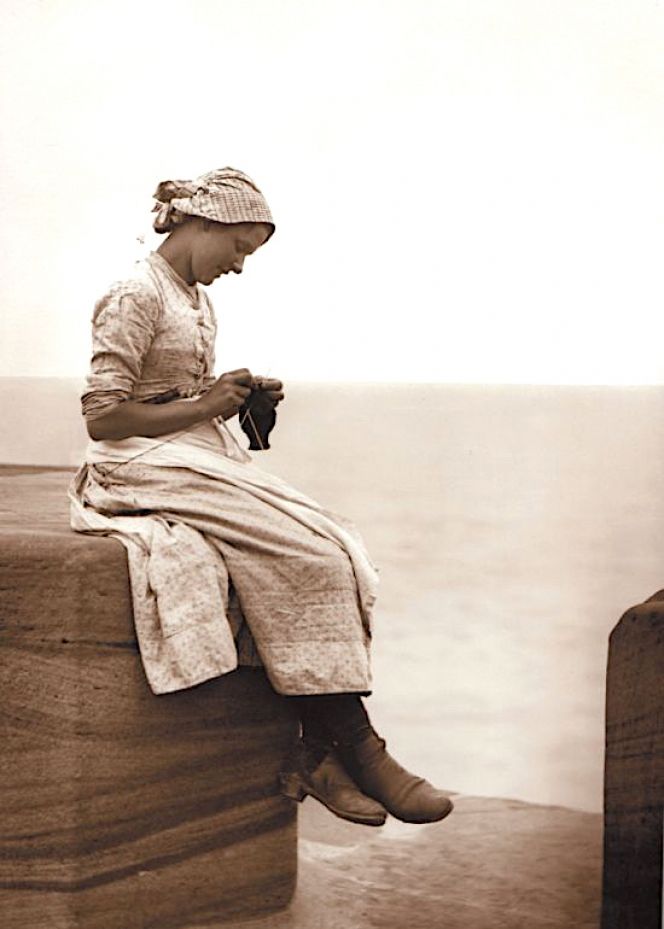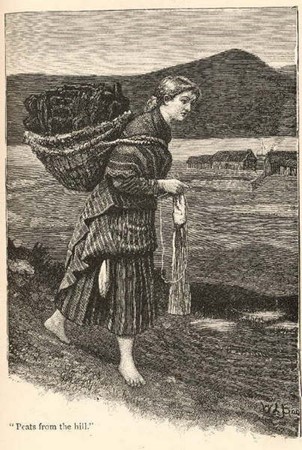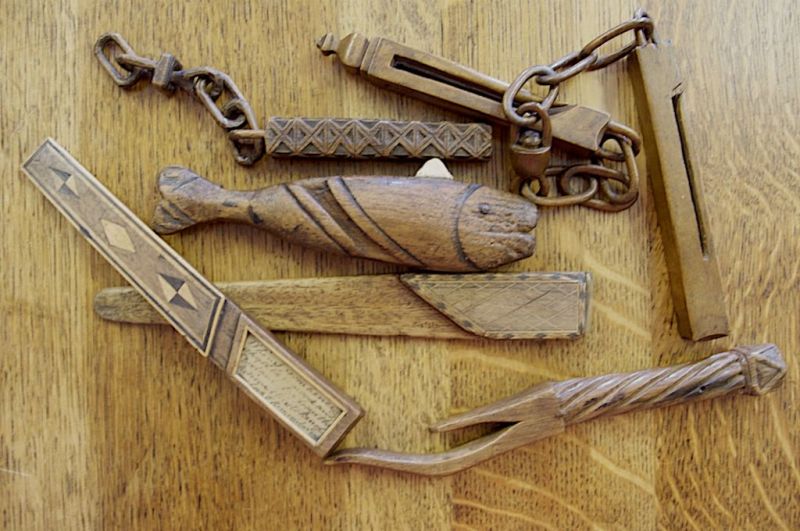
It is rare to get a glimpse of a knitting sheath in use, but this late 19th century photograph of a young woman on the West Pier in Whitby is an exception. The wooden aid seems to be fastened to the belt, visible just above her right arm. (Courtesy of: Whitby Museum, Photographic Collection. Photo: Frank Meadow Sutcliffe. B-2C). Source The IK Workshop Society at www.ikfoundation.org
Pivot method knitting - an idea for left-handers
How the necessity of the past can help the left-handed knitters of today
In the days when people knitted for a living every minute counted, so they developed ways of knitting on foot.
Famously the Shetland knitters used a knitting belt, which was padded, and you poked your double-pointed needle into it as you worked in the round. The knitters of northern England instead used a knitting stick or sheath that had a hole drilled into one end for the needle, which itself was tucked into a belt.
In both cases this provided stability and a lever that appeared to speed up the knitting process.

Linking to the present
Now I didn’t know it, but I’ve been using a variation of these techniques all my long knitting life.
I am left-handed but was taught to knit by my Granny and Mum, both right-handers. Consequently, my right hand and arm were being asked to do things that they weren’t so good at.
My solution was to stick the end of my right needle into my waistband.
Not as beautiful as the knitting sheaths or sticks shown in this picture but still a pivot.
My right hand then just had to ‘throw’ the yarn and my left hand did all the fiddly stuff at the business end.

